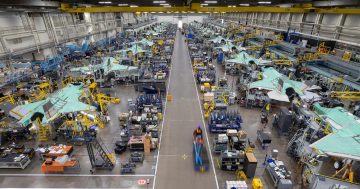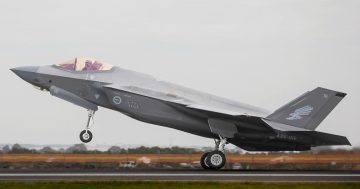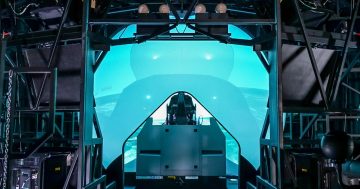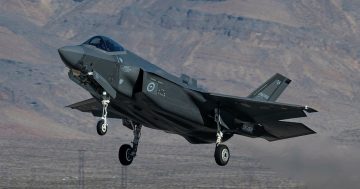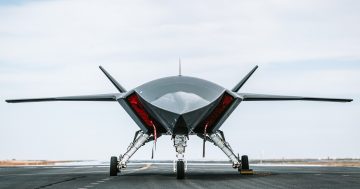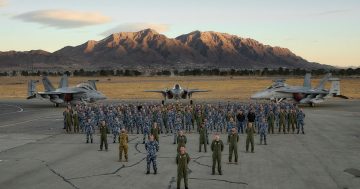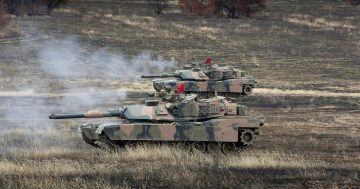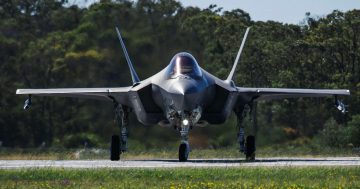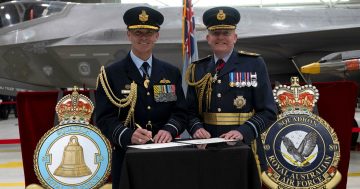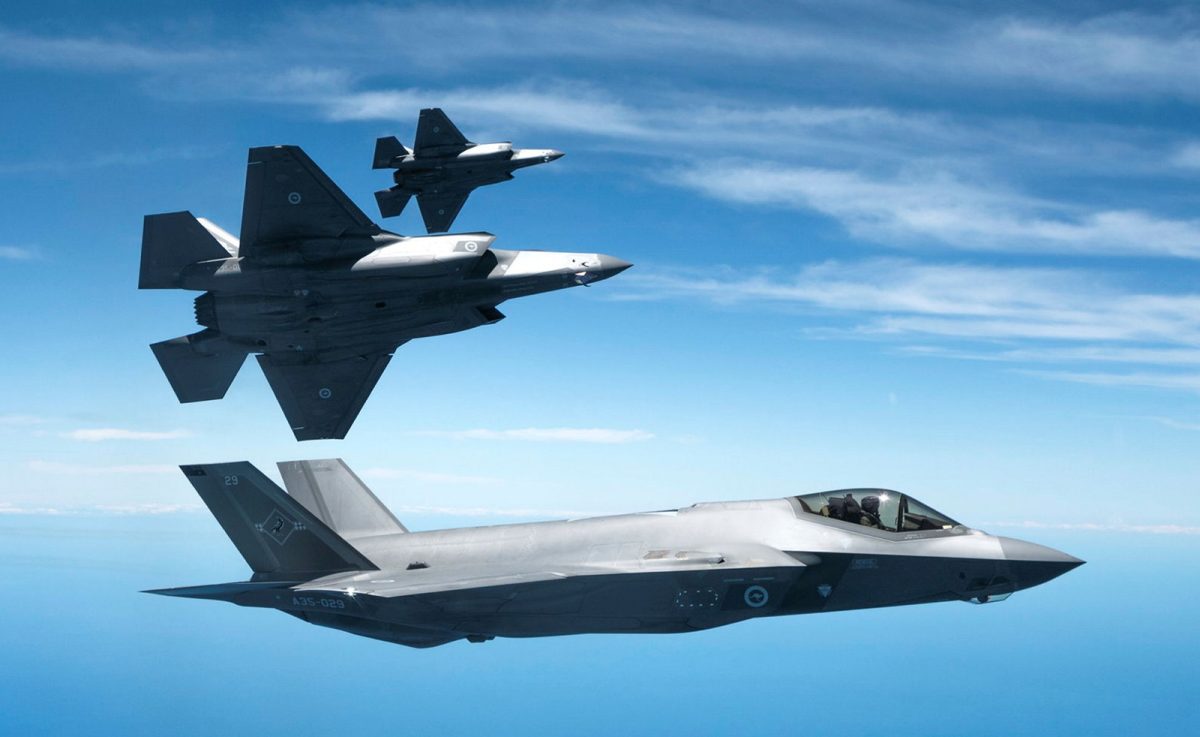
All statutory and regulatory requirements have been appropriately addressed for the Lockheed Martin F-35 Lightning II Joint Strike Fighter. Photo: ADF.
Some 22 years after the program commenced and five years after the original schedule, the US Government has approved the Milestone C/Full Rate Production (MSC/FRP) for the Lockheed Martin F-35 Lightning II Joint Strike Fighter (JSF) combat aircraft program.
Approved by the Under Secretary of Defense for Acquisition and Sustainment Dr William A LaPlante, Milestone C is the all-important point at which a development program moves to a production program.
“This is a major achievement for the F-35 Program,” Dr LaPlante said.
“This decision … highlights to the Services, F-35 Cooperative Program Partners, and Foreign Military Sales (FMS) customers that the F-35 is stable and agile and that all statutory and regulatory requirements have been appropriately addressed.
“The F-35 Program is the premier system that drives interoperability with our allies and partners while contributing to the integrated deterrence component of our National Defense Strategy.”
Up until now, and despite having been in low-rate initial production (LRIP) for well over a decade, the three F–35 models—of which about 1000 have been delivered to date—have only been built in annual or multi-year LRIP batches while development has continued.
Called concurrency, the production of the F-35, while development was still underway, was originally designed to get the aircraft into service faster. Instead, it has actually been hampered by ‘fixes’ to numerous issues found during testing and development, which have had to be integrated into aircraft already in service or in production, resulting in reduced combat effectiveness and availability.
While the awarding of Milestone C is an important landmark, and a line can effectively be drawn under the development of the Block 3 variant flown by Australia and most other operators, it is a case of business as usual for the JSF program.
Some of the LRIP batches have been up to 156 aircraft per year, which is close to or equivalent to planned FRP rates anyway. In addition, the aircraft’s development is ongoing—and likely will be for its entire service life—through various hardware, software, and weapons upgrade programs.
One of these upgrades is the Technology Refresh 3 (TR3) and Block 4 hardware and software program, the development of which has been hampered. These delays have resulted in aircraft being manufactured but not delivered pending the completion of the TR3 development, leading to an anticipated shortfall in total deliveries in 2024 of between 40 and 70 aircraft.
The Block 4 software will enable the aircraft to use a more advanced radar and electronic warfare system, a more efficient engine and other enhancements from later this decade. However, to host these improvements, the TR3 upgrade will first need to integrate new hardware, such as a more powerful computer, improved cooling, and new cockpit displays.
The F-35 is built in three variants: the F-35A conventional take-off and land (CTOL) model, the F-35B short take-off and vertical land (STOVL) model, and the F-35C aircraft carrier variant (CV).
The F-35B is designed to operate from austere airfields or amphibious ships at sea and is operated or on order by four countries, including the US, UK, Italy and Singapore, while the F-35C is operated only by the US Navy and Marine Corps.
Globally, the entire F-35 fleet has flown more than 811,000 flight hours in 486,000 missions from 32 operational bases and 12 ships, and more than 2360 pilots have been trained on the aircraft.
The RAAF declared an Initial Operational Capability (IOC) in December 2000, establishing one operational squadron and one training squadron of F-35As and an in-country maintenance capability. It has since established two more operational squadrons. The RAAF currently operates 63 F-35As out of an order for 72 aircraft.
The Fully Operational Capability (FOC) of the RAAF’s F-35As was scheduled to have been declared at the end of 2023 with the delivery of the last nine jets. However, this has been delayed due to the TR3 integrated delays.

The RAAF F-35A at Airshows Downunder Shellharbour earlier this month. Photo: ADF.
The Milestone C decision comes when the aircraft is proving popular with FMS customers despite the US Air Force cutting back on its planned F-35A orders.
On 11 March the service submitted its FY25 budget proposal which stated it would only buy 42 F-35As next financial year instead of the originally planned 48. While the service is sticking to its plan to buy 1763 F-35As over the life of the program – about a third of which have been delivered – the production slowdown is mainly due to budget priority issues.
At the same time as it is reducing its F-35A and new Boeing F-15EX buys in FY25 to a total of just 60 combat aircraft, the service has proposed to retire some 200 ageing combat aircraft, including 32 F-22s, 91 F-15C/D/Es, 56 A-10s and 11 F-16C/Ds.
In the classified realm, the US Air Force is developing a new combat aircraft called Next Generation Air Dominance (NGAD) and has proposed funding that program to the tune of US$2.8bn (A$4.23bn), while another US$680m (A$1.03bn) has been allocated to the uncrewed Collaborative Combat Aircraft (CCA) program.
Original Article published by Andrew McLaughlin on Riotact.


